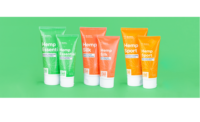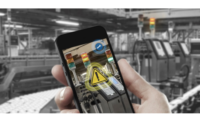CBD is perhaps the top trending beauty and wellness topic of 2020. Since 2018, when the U.S. Farm Bill made industrial hemp legal, CBD has shown up in all kinds of products. In fact, in the United States alone, CBD sales are projected to top $40 billion by 2024, according to a study by BDS Analytics and Arcview Market Research. Brands are clambering to get out the next iteration of CBD merchandise as quickly as possible and take advantage of a booming market. Benefit claims are widespread — use of CBD is being explored for everything from easing anxiety to skin renewal.
While there are many reasons to get into the CDB game, it’s important to recognize that, like any other beauty substance, there are rules and regulations governing its sale. And because it is relatively new as a viable, legal product, the rules are evolving at a rapid rate. So before you begin churning out toothpaste, lotion, and makeup laced with a CBD boost, it’s important to do your homework and understand the market landscape. Here are five things you may not have known should be part of creating and selling CBD products.
1. Decide the Purpose of Your Product
This seems like a no-brainer, but for CBD products, your vision needs to go a lot deeper than a basic good idea. It needs to go further even than an in-depth audience analysis or focus group. There are more than 100 different cannabinoid compounds — and with the right process, these can be separated and then recombined in varying amounts, just like a cookie recipe. That means there are a virtually limitless number of CBD blends, and each one works differently. So more than just hoping to “relieve stress,” you need to know the exact details of your product’s desired outcome before you even begin planning the blend. As more testing and research are completed, and we start to understand the effects of the different compounds on our wellness, you should be able to scientifically tailor a solution to address the needs of your customers.
2. Pick a Process
CBD can be made through a full spectrum, isolate or broad spectrum process. They are pretty drastically different, so it’s vital that you understand the nuances, and know which one will help you achieve what your product has to accomplish. Full spectrum CBD is the most variable product; you don’t control the amounts of each cannabinoid and non-cannabinoid compound present, including how much THC is in the final product. So if you want to make certain claims in your packaging, or if control is important to your product’s purpose, this is not the right process for you. However, it is the cheapest option. The isolate process gives you precise control, producing a single compound at a time. Broad Spectrum is the most comprehensive, precise process, used to build all of the different combinations that interact with different receptors in the endocrine system. This allows your product to be uniquely suited to accomplish your idea. A broad spectrum process also costs more upfront, although it may save you both time and money in the long run as regulations change.
3. Find the Right Kind of Manufacturer
Not all facilities are created equally when it comes to CBD. Because the regulations are in flux right now, it’s better to have an abundance of caution when manufacturing a CBD product. This is particularly true if you intend to expand your CBD offering in the next few years. As you look at various manufacturers, you should come prepared with a list of questions, including: Is the facility independently certified? Do they follow FDA Good Manufacturing Practices? Do they test their suppliers’ product? How is cost variability in supply handled? Those are just a few to get you started. The more you understand about the chemical makeup of CBD and the way the market currently functions, the better prepared you’ll be to choose a manufacturer that is a good fit.
4. Independent Testing and Certification
While CBD is not currently an FDA controlled substance (except in rare cases where it is sold as an actual pharmaceutical product), odds are that it eventually will be. And even though you don’t need FDA approval to go to market, you still have to follow the laws that govern the advertising and sale of any products. This includes not making claims that aren’t true. In other words, if you want to tell customers that your product will improve their health, you need solid research to back that up and protect yourself from fines and lawsuits. The best way to cover your bases is through independent testing from a third party with no vested interest in your financial success. You should also consider using a certified manufacturing facility.
5. Carefully Strategize Packaging
This may not come as a surprise if you’re already in the manufacturing business. Packaging is an important aspect of any product. Cartons, bottles or vials must meet all safety guidelines and be practical to ship. An additional concern for CBD is the ever-changing regulations. All of your labeling and any claims you make must be simple, clear, and backed up by real research. Depending on the product itself, there may also be special packaging considerations. CBD products should always be contained in child-resistant bottles, jars, locking bags or boxes. Always verify state regulations wherever products will be sold, since CBD is still not officially recognized at the federal level.
If these steps seem arduous, it’s important to remember that the repercussions of taking shortcuts upfront could be catastrophic on the back end. Consider how much your profits will be impacted if you’re faced with a recall or messy legal battle. Through all the red tape and due diligence, keep in mind what ultimately matters: the customer. Happy customers are loyal customers. And in today’s share-everything culture, you definitely want a consumer base that’s so happy with what you put out that they give you rave reviews — online and in person.
The above ideas are designed to give you a starting point to putting together the perfect CBD product plan. It is by no means a comprehensive list. As the regulatory landscape evolves, it will be important to keep educating yourself on CBD laws. And as science catches up to the enthusiastic reception of CBD, you’ll want to know what developments can help your customers to feel their absolute best.


